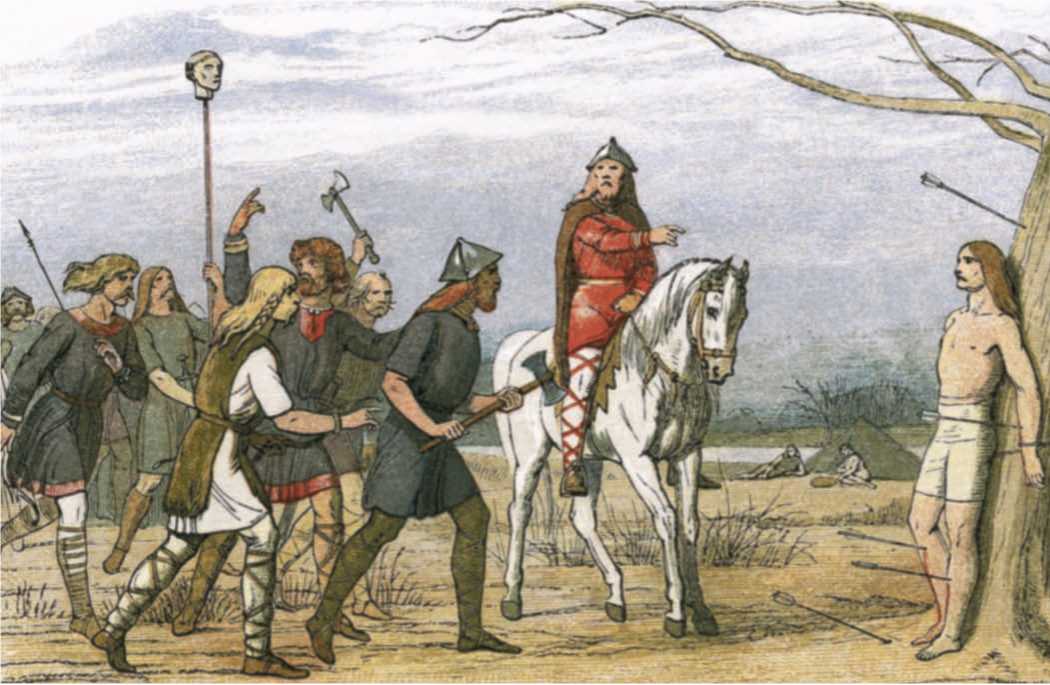Although some attacks on Frankish lands continued to occur in the years that followed, the difficulties the Vikings encountered there often motivated them to turn their attentions elsewhere. England was a prime example. At the time, it was not a unified country but rather a collection of small kingdoms, including East Anglia in the east; Northumbria (including York) in the north; Mercia in the middle; and the strongest, Wessex (including London), in the south.
The large Norse force that had appeared on Thanet in 865 rapidly increased in size and became known as the "Great Army" (or "Great Fleet"). In the years that followed it marched northward, southward, and westward, fighting battles and gaining control of large swaths of territory. In 866, The Anglo-Saxon Chronicle says, "a large heathen army" arrived. Led by three chiefs— Ivar the Boneless, Halfdan, and Ubbi— the invaders "fixed their winter-quarters in East-Anglia, where they were soon horsed [able to move over land]." The Vikings first went north and invaded Northumbria, where two local rival claimants for the throne temporarily patched up their differences and faced the enemy together. "Having collected a vast force," the English leaders fought the invaders at York. But "there was an immense slaughter of the Northumbrians [and] both the kings were slain on the spot."26
With York firmly in their control, the Vikings pushed back into East Anglia and defeated and killed its ruler, King Edmund. Mercia fell to the intruders soon afterward. That left only Wessex, the last unconquered English kingdom, to stand alone against the advancing horde. The Vikings entered Wessex in 878. At first they were successful, and the local king, Alfred, fled with his followers into some impassable marshes. A formidable character in his own right, Alfred built a fortress there from which he struck at the invaders in a series of sneak attacks. Finally he decisively defeated them, forcing them to leave his kingdom. With great relief, the anonymous person then in charge of

King Edmund, ruler of East Anglia, is slain by Vikings. Eventually, the English regrouped, struck back, and defeated the invaders.
The chronicle asserted: "The enemy had not, thank God, entirely destroyed the English nation!"27
In 886 Alfred signed a treaty with Viking leaders, who pledged to stay out of Wessex and remain in a large Norse occupation zone stretching across eastern England. The zone became known as the Danelaw.
The English in Wessex were not content to see their fellow Anglo-Saxons suffer under Viking rule, however. After Alfred died in 899, his son and successor
Edward the Elder, aided by his capable sister Aethelflaeda (a bold and skilled military leader), launched one campaign after another against the Vikings. The siblings, joined by Edward's own son Athelstan, eventually succeeded in capturing all of the Danelaw. The last Norse holdout was a colorful warrior-chieftain, Erik Bloodaxe, an exiled king of Norway and the final ruler of the Viking kingdom of York. When he was killed in an ambush in 954, the way was open for the rise of a true English nation.




 World History
World History









